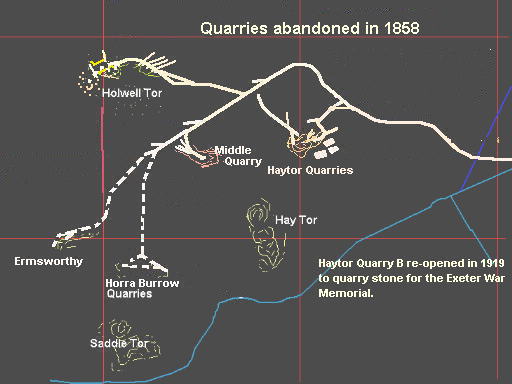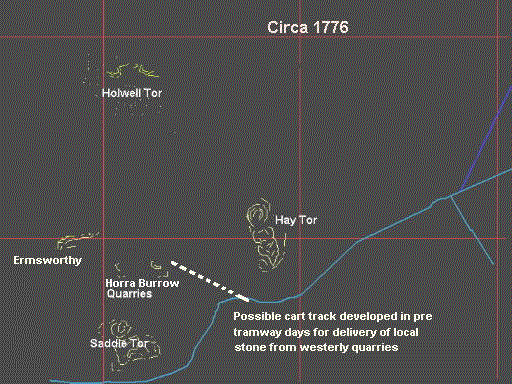|Helen Harris (1994) |Phil Newman et al (1999)| |Todd Gray (2001)| |

|
Phase 6, Closure
Helen Harris (1994) states that demand and production
had virtually ceased by 1858 due to competition from other quarries and the undoubted
cost of removing the stone from the moor. She mentions sporadic activity after 1858
and mentions that in 1919, Haytor Granite was used for Exeter's War Memorial. It was
said that the transportation of the granite took twice as long as it would have
taken by tramway.
Haytor Quarry B will have been the most likely source for the extraction of the
granite for the war memorial. Some lifting gear is still in place today.
Amery Adams' (1946), Fig 3 (on back of plate 13)
shows this lifting gear still standing in it's original position in Quarry B.
|
The short spurs on the tramway will have been used most likely as holding
places for cars containing finished stone. They all lead onto the tramway in
the direction of descent to Teigngrace.
The siding at Holwell Tor Quarries was most likely used for parking an
entire set of cars overnight close to the stables ready for descent the
following day.
The trains of cars will have left and returned at set times all descending within a few hours of each other and returning the same day for the following days run. This way congestion will have been kept to a minimum and inter quarry track communication could have easily been maintained. Below is an animated picture showing the complete development of
the quarries and tramway system.
|
